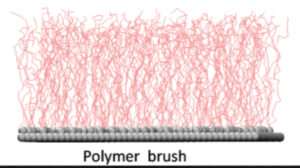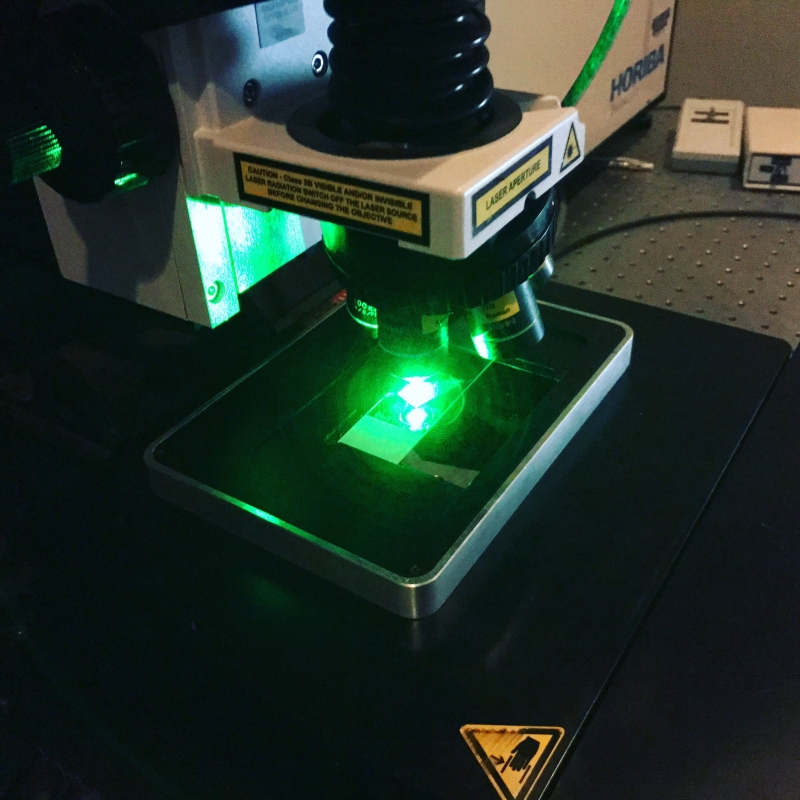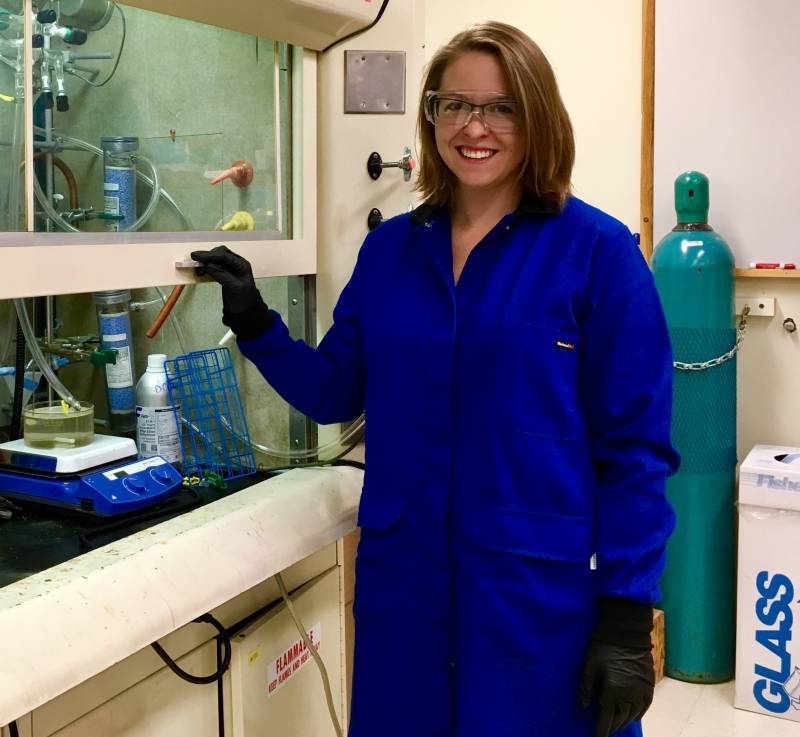Polymer coatings are ubiquitous in worldwide technologies. We see them everywhere without truly appreciating, or even knowing of, their existence. Us humans never really think about the coating of something unless it is sugar or nuts or caramel on candy. Today, I bring you one sweet element of science: Kali Serrano, a genius with polymer brushes.
 Polymer brushes are surfaces which have polymers (large molecules made of many smaller molecules called monomers) attached covalently and they stick up, like bristles on a brush. Serrano investigates how glass transition temperatures, thickness, and responsiveness may be affecting the properties of the surface of these polymer brushes.
Polymer brushes are surfaces which have polymers (large molecules made of many smaller molecules called monomers) attached covalently and they stick up, like bristles on a brush. Serrano investigates how glass transition temperatures, thickness, and responsiveness may be affecting the properties of the surface of these polymer brushes.
Successful applications of such polymer coatings include resistance to the effects of weathering (i.e. rain, UV light, etc.), or even resistance to biofouling (or the accumulation of microorganisms, plants, algae, or animals on wet surfaces). In addition, nature uses these surfaces to control wetting in the cartilage in joints or the surface of lung tissue for lubrication. More recently, surfaces that are self-cleaning, self-healing, or stimuli-responsive have attracted special interest in the creation of “smart” coating materials, whereby surfaces change their properties in response to changes in the environment.
The unique nature of these ultrathin polymer coatings stems from the dense and extended conformations that are possible at high grafting densities. Grafting density refers to how many polymers are attached to a certain surface. As useful as they are, however, these materials pose unique characterization challenges because their properties differ significantly from analogous bulk materials. Many robust techniques have thus been used to characterize properties of these advanced materials. Serrano collaborates with different groups around campus and works in teams to study techniques on the interface of physics, materials science and engineering, and chemistry to find accessible methods for these complex systems. Some days, she synthesizes sensitive polymer surfaces, and some days she characterizes substrates using techniques such as Raman spectroscopy.

Raman spectroscopy (named after Indian physicist Sir C. V. Raman) is a spectroscopic technique that is used to observe vibrational, rotational, and other low-frequency modes in a system. Raman spectroscopy is commonly used in chemistry because it provides a structural fingerprint by which molecules can be identified. Serrano uses this technique to characterize her polymer coatings to see if they have the right functional groups for the desired outcome. After that, she goes on to test their more complex properties. Accurate characterization of these complex properties is critical to their incorporation in real-word applications such as a coating on artificial transplants to control wetting in the cartilage in joints, or the surface of lung tissue for lubrication.
Serrano is a National Science Foundation Graduate Research Fellow in the Materials Chemistry Ph.D. Program at the University of Illinois at Urbana-Champaign. She works in Professor Paul Braun’s Research Group to study polymer thin films for coating applications. Serrano’s favorite thing about being a scientist is being able to work on the forefront of research, solving the problems that are holding industry back from making the next technological breakthrough.
During her time in graduate school, she has initiated several outreach programs including the U.S. National Olympiad Program for high school students and the ECI Undergraduate Research Conference. She serves as an associate member on the Committee for Chemical Safety and as a liaison for the National Graduate Education Advisory Board within the American Chemical Society. Serrano is also on the advocacy committee for the Science Policy Group at UIUC, which is a non-partisan group that provides opportunities for emerging scientists and engineers to learn more about policy and get hands-on experience. Her current career goal is to “pursue a tenure-track faculty position after my graduate studies because it will combine my passions for mentoring and experimental investigation.”

One of the main inspirations for Serrano’s career was when she was volunteering as a freshman at the National Chemistry Week (NCW) booth for the American Chemical Society (ACS) undergraduate student chapter. “I was surprised to learn about the lack of knowledge about basic chemistry principles in the general public and how that sometimes led to concerns and fear about chemicals. Since this realization, it has been my vision to do chemistry research and build awareness of chemistry in the community with whatever I do. Doing research in basic science is like being a silent hero of the world and that really motivates me.”
In this short article, I merely glazed over all of the work that Serrano does to contribute to the world of polymer chemistry, but the next time you see a shiny new car, or move an artificial joint without it hurting, know that a polymer chemist is working really hard to make you smile (on the surface).








